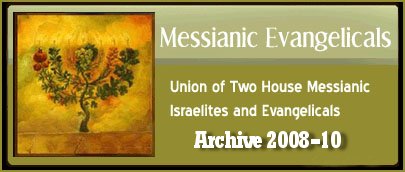RESOURCES
5-144000
A
B
C
D
E
F
G
H
I
J
K
L
M
N
O
P
Q
R
S
T
U
V
W
Y
Z
|
|

|
New mysteries of the Shroud unveiled Body inside ancient linen 'levitated' while leaving image
Posted by Lev/Christopher on November 18, 2009 at 12:43pm
in Yah'shua - the Alef and the Taw

A new video documentary about the Shroud of Turin makes a startling new
claim about what some believe to be the burial cloth of Jesus – the
body was weightless or levitating when it left the remarkable image.
In the DVD video "The Fabric of Time," scientific experts using the
latest technology are able to produce a three-dimensional holographic
image from photographs of the shroud. What they reveal is nothing short
of spectacular.
They show the image on the shroud is one produced not from a body lying
on a stone slab, but rather an image of a weightless body, perhaps
levitating above its resting place.
The documentary also calls into questions earlier findings about carbon
dating tests that claimed the shroud dated back only to the Middle Ages.
In addition, forensics experts testify bloodstains on the Sudarium of
Oviedo, reputed to be the piece of linen that covered Jesus' face,
perfectly match those on the shroud.
The history of the Sudarium date back to the 7th century in Spain. The
blood types on both cloths were found to be AB. The pollen grains found
on the Sudarium also match those found on the shroud.
Last June, Pope Benedict XVI announced that the next public exhibition
of the Shroud of Turin will take place April, 19, 2010, through May 23,
2010.
The Vatican announced on October 27, 2009 the pope will visit the Shroud May 2.
Visitors to Turin, where the Shroud has permanently resided since 1578,
will view the cloth in the Cathedral of St. John the Baptist. To
conserve and protect the Shroud, it is permanently stored in a custom
built, temperature and humidity controlled, lightight case, which can
be moved, raised and opened to display the cloth for public exhibitions.
Get "The Fabric of Time" in the WND Superstore.
-
Reply by Lev/Christopher on November 18, 2009 at 12:45pm
-
-
-
Reply by DR on November 18, 2009 at 12:51pm
-
-
-
Reply by Lev/Christopher on November 18, 2009 at 12:55pm
-
-
-
Reply by Lev/Christopher on November 18, 2009 at 1:03pm
-
-
-
Reply by DR on November 18, 2009 at 6:19pm
-
-
|


This page was created on 5 May 2010
Updated on 5 May 2010
Copyright © 1987-2010 NCCG - All Rights Reserved
|
|


